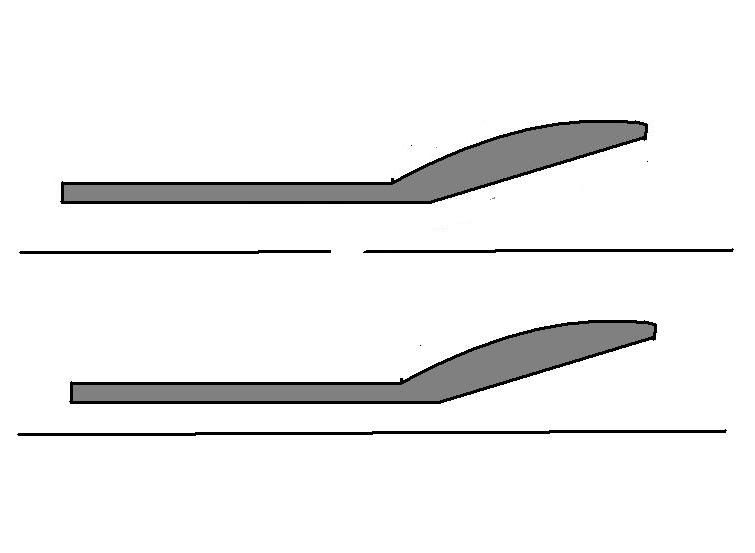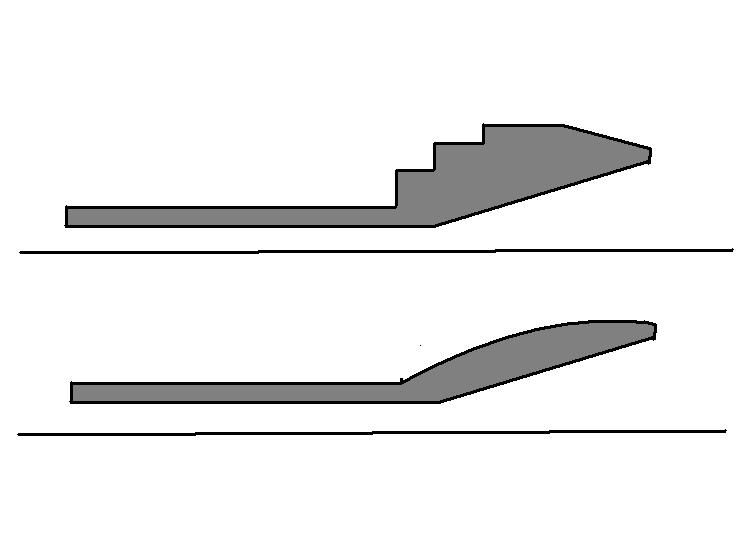DRCorsa wrote:@ringo
I didn't really understand the different top surface subject.
Maybe you mean the different angle of the diffusers between those 2 images? If yes, this has nothing to do with the analysis, the voncave one is just rotated on the post processor. The flow direction is parallel to the throat on both examples.
No, not the angle. The shape at the top surface has to be the same to have a fair comparison.
For example you can expect to get the same results here:

Correct?
Now what if for the very same throat shape you chage the top surface to this:

Obviously you would get differing results between the two, even though the have the same thoat shape.
This would give invalid results. You would have the same exact diffuser shape, but different top surface, and you would conclude from the results one is better than the other becuase it has less drag and more downforce.
This is why i was saying you should do the experiment over, but make everything but the diffuser throat the same.
Like this:

This is the only way you can isolate the performance due to the shape only.
This is a purer experiment. Forget about tyres and wings for now. The comparison is with diffuser shape, nothing else.














